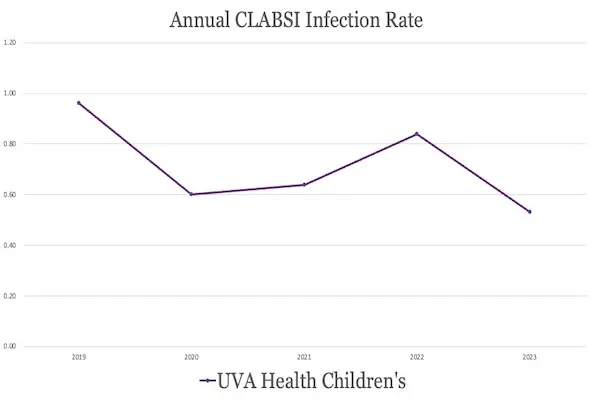Central Line-Associated Bloodstream Infection (CLABSI)
Make an Appointment
As part of our quality and safety reporting guidelines, UVA Health Children's is sharing our central line-associated bloodstream infection (CLABSI) data. We hope this data shows patients and their families that UVA Health Children's prioritizes patient safety.
What Is a CLABSI?
Central lines are valuable tools for patients with longer hospital stays, or for whom vein access presents obstacles. With a central line, we can administer fluids, medications, and perform procedures like dialysis. But central lines can also allow bacteria to enter the bloodstream.
In order to prevent CLABSIs, we practice proper insertion and cleaning techniques. We also help educate families and patients on how to properly care for their central line.

How Is Data Collected?
We collect information from all patients in our hospital who have a central line. We count how many patients have a central line, and then how many days they had a central line. For every 1,000 line-days across all patients, we calculate the rate of CLABSIs.
We measure that data against other children's hospitals, to see how we're doing compared to our peers.
| Year | Average |
|---|---|
2019 | 0.96 |
2020 | 0.60 |
2021 | 0.64 |
2022 | 0.84 |
2023 | 0.53 |
How Are We Improving?
During daily bedside rounds, we review the timing of dressing changes. We check the integrity of the line, to make sure it's still placed and covered correctly. We also talk about what procedures need line access.
Family members, care partners, and other care team members are invited to participate in daily rounds.
Our multidisciplinary review team examines all infections that occur in our hospital, including CLABSIs. That allows us to identify any changes that could improve our patient care.